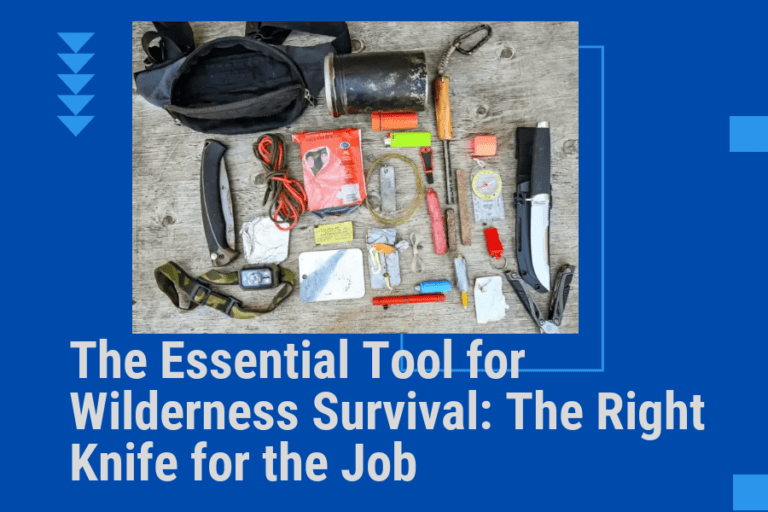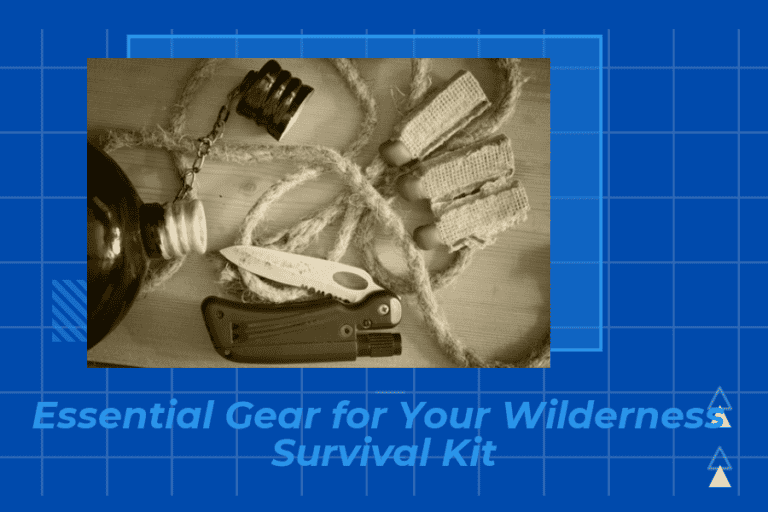The Basics of Wilderness Survival: Filtering Water for Safety and Cleanliness
Navigating the great outdoors can be an exciting and enjoyable experience, but it’s important to equip yourself with the skills needed for wilderness survival before you embark on your journey.
One of the most important and essential skills is filtering water for safety and cleanliness.
In this article, we’ll cover the basics of wilderness survival water filtering, so you can stay safe and healthy while exploring the wilds. We’ll discuss the importance of filtering water in the wilderness, what type of filtration systems work best, and the steps to take to filter water properly.
By the end of this article, you’ll be prepared and knowledgeable enough to ensure that your wilderness survival water filtering experience is safe and successful.
Understanding the Need for Filtering Wilderness Water
Wilderness survival is an important skill to have when exploring the great outdoors. Filtering water is one of the most important steps in ensuring your safety and health while out on an adventure.
When in the wilderness, drinking contaminated water can lead to a variety of illnesses, and can even be life-threatening. Therefore, it’s essential to practice proper water filtering techniques to ensure that your water is safe to drink.
There are several types of water filtration systems available, including bottle filters, pump filters, and gravity filters.
Bottle filters are small and lightweight, and are designed to attach to a water bottle and filter out contaminants.
Pump filters are larger and more powerful, and they use a hand pump to push water through a filter.
Gravity filters use gravity to move water through a filter, typically contained in a bag, so that it is clean and safe to drink.
Regardless of the type of filtration system used, it’s important to ensure that the filter is rated to remove harmful bacteria and other contaminants.
Once you’ve chosen the right filtration system, it is essential to know how to use it properly and safely. Start by ensuring that the water you are filtering is free of large debris, and then follow the directions that came with your filtration system.
Finally, always be sure to clean and sanitize your filter after each use, to avoid cross-contamination and other safety risks. By following these steps and using the right filtration system, you can ensure that you stay healthy and safe while exploring the great outdoors.
The Different Types of Water Filters
When it comes to wilderness survival, maintaining clean and safe drinking water is essential for the health and safety of you and your companions. Knowing which type of water filter is best for the situation is key, and there are a few different types available that cater to different needs.
Gravity filters are the most common type of filter used in the wilderness. They are easy to use and require no electricity or batteries, making them an ideal choice for remote camping trips. Gravity filters work by running water through a filter cartridge which removes harmful contaminants from the water. The filtered water is then collected in a separate container for easy access.
Another type of water filter is a pump filter which uses a handheld pump to force water through a hollow fiber filter cartridge which removes contaminants. Pump filters are often more effective than gravity filters and can filter more water quickly.
The third type of filter is a chemical filter which uses iodine tablets, chlorine dioxide tablets, or other chemical treatments to purify water. Chemical filters are a quick and easy option but often leave a strange taste in the water. Additionally, they don’t remove sediment or other particulates from the water.
No matter which filter you use, it’s important to understand how to use it properly and how to maintain it. Knowing how to properly filter water in the wilderness is an essential skill for anyone who plans to explore the great outdoors.
Choosing the Right Filter for the Job
Choosing the right filter for the job is critical. There are a variety of filtration systems available on the market and selecting the right one can depend on a range of factors. Factors to consider include the type of water, the expected usage, and the size of the filter. For instance, a larger filter may be more suitable for a lengthy backpacking trip, whereas a smaller filter can help for shorter day hikes.
In addition to the size of the filter, there are a range of filter styles available, including activated carbon and ceramic filters. Activated carbon filters are effective at removing bacteria and other contaminants, while ceramic filters are best used for removing sediment and large particles. The type of filter you choose will depend on what you plan to use it for and the type of water you will be filtering. It is important to research the different types of filters and choose the one that is right for you.
By taking the time to choose the right filter for the job, you can be sure that you are prepared for any wilderness adventure. With the right filter, you can stay safe and healthy while exploring the wilds.
The Steps Involved in Filtering Water
Filtering water is important when exploring in the wilderness because it removes harmful bacteria, protozoa, and viruses that can make you sick.
The steps involved in filtering water are simple, but it’s important to be thorough.
The first step is to gather your supplies. Gather a container, water filter, and a clean container for the filtered water.
Next, find a source of water that is free of debris, and fill your container. Once the container is full, use the water filter to strain the water.
Depending on the filter you are using, you can use a mechanical filtration system or a chemical filtration system.
If you are using a mechanical filter, you will need to pass the water through the filter to remove particles, debris, and microscopic organisms.
If you are using a chemical filter, you will need to add a chemical such as chlorine or iodine to the water to kill any harmful organisms.
Finally, let the filtered water sit for at least 20 minutes before you drink it. This will give the filter time to do its job properly and make sure that the water is safe to drink.
Filtering water in the wilderness is an important survival skill, and it can save you from becoming ill. By following the steps outlined above, you can ensure that your water is safe and clean, so you can enjoy your wilderness adventure with confidence.
Tips and Tricks for Filtering Water
When it comes to wilderness survival, filtering water is essential for staying safe and healthy. It’s important to protect yourself from bacteria, parasites, and other contaminants that can be found in natural water sources. Having a filtration system in your wilderness survival kit is the best way to ensure the water you’re consuming is safe.
When selecting a filter for your wilderness survival kit, look for one that meets the EPA’s standards for water treatment. Generally, filters are rated according to their micron sizes – the smaller the micron, the more contaminants a filter can remove from the water.
The most common types are mechanical filters, chemical filters, and ultraviolet (UV) filters. Mechanical filters are the most effective, but they require regular maintenance and cleanings to remain effective. Chemical filters use iodine or chlorine to treat the water, while UV filters use ultraviolet light to kill microorganisms.
Before you start filtering water, you should always make sure that it’s safe to drink. Check the water source for possible contamination and filter it accordingly. When filtering your water, be sure to do it slowly and thoroughly to ensure all of the contaminants are removed. Once you’ve filtered your water, you’ll want to store it in a clean container or bottle for future use.
Wilderness survival water filtering is an important skill to have in your wilderness survival kit. With the right filtration system and the right techniques, you can make sure the water you’re consuming is safe and clean. Be sure to do your research and equip yourself with the skills and knowledge needed to filter your water properly and ensure your safety while exploring the great outdoors.
Staying Hydrated and Healthy in the Wilderness
Staying hydrated in the wilderness is essential to our overall health and well-being. Unfortunately, the water found in streams, lakes, and other natural sources can be contaminated with bacteria, parasites, and other pathogens that can cause illness. To stay safe, it’s important to filter the water to make sure it’s safe to drink.
The easiest and most common way to filter water is with a water filter. There are a variety of water filters on the market, from hand-held systems to larger systems that can be carried in a backpack. All water filters work by passing the water through a filter membrane that will capture and remove bacteria and other contaminants. Additionally, it’s also a good idea to use water purification tablets that will kill any remaining bacteria or parasites, ensuring your water is safe to drink.
By following the tips outlined in this article, you can stay safe and healthy while exploring the wilds. Filtering your water is essential for wilderness survival and by doing it properly, you can rest assured that you’re drinking safe and clean water.







